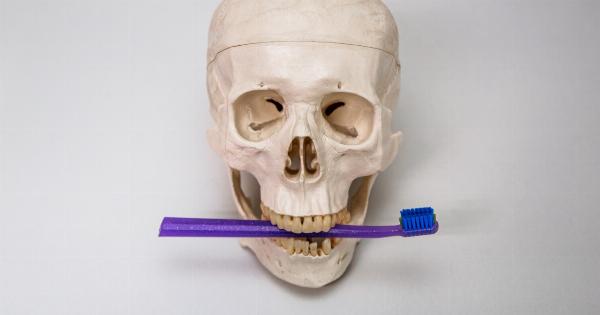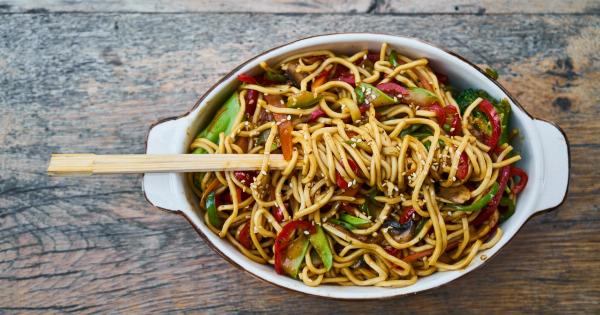Back pain, particularly in the middle region, is a common ailment that affects millions of people worldwide. It can be caused by several factors, including poor posture, muscle strain, or even certain medical conditions.
However, one factor that is often overlooked is the role of diet in contributing to middle back pain. The food we consume plays a significant role in our overall health and can have a direct impact on the health of our back muscles and spine.
In this article, we will explore the connection between diet and middle back pain and discuss the dietary changes that can help alleviate this discomfort.
The Importance of a Balanced Diet
Good nutrition is essential for the body to function optimally. Eating a balanced diet provides the necessary nutrients, vitamins, and minerals that support various bodily functions, including muscle health and tissue repair.
A diet lacking in essential nutrients can result in muscle weakness and imbalances, leading to discomfort and pain in the middle back area.
The backbone, also known as the spine, is a complex structure made up of bones called vertebrae and intervertebral discs that act as shock absorbers. The muscles, ligaments, and tendons surrounding the spine provide stability and support.
Imbalances or weakness in these structures can cause middle back pain.
Vitamin D and Calcium for Strong Bones
One vital component for maintaining a healthy spine is sufficient intake of calcium and vitamin D. Calcium is essential for the growth and maintenance of strong bones, while vitamin D helps with calcium absorption.
Low levels of these nutrients can result in weakened bones, making them more susceptible to fractures and other conditions that cause middle back pain.
Include foods rich in calcium such as dairy products, leafy greens, and fortified cereals in your diet.
Sun exposure is an excellent natural source of vitamin D, but incorporating fatty fish like salmon and mackerel, egg yolks, and fortified foods can also help increase your vitamin D levels.
Omega-3 Fatty Acids for Reducing Inflammation
Inflammation can contribute to middle back pain, and incorporating omega-3 fatty acids into your diet can help combat this issue. Omega-3 fatty acids have anti-inflammatory properties that can reduce pain and inflammation in the body.
They also promote good cardiovascular health, contributing to overall well-being.
Fatty fish like salmon, tuna, and sardines, as well as flaxseeds, chia seeds, and walnuts, are excellent sources of omega-3 fatty acids. Consider adding these foods to your diet to potentially reduce inflammation and alleviate middle back pain.
Hydration and Spinal Disc Health
Staying hydrated is crucial for maintaining spinal disc health. The intervertebral discs in the spine act as shock absorbers and provide cushioning between vertebrae.
These discs are composed mainly of water, and dehydration can cause them to lose fluid and height, resulting in decreased mobility and increased back pain.
Ensure you consume an adequate amount of water daily to keep your spinal discs hydrated. In addition to water, incorporate foods with high water content, such as fruits and vegetables, into your diet to support optimal hydration.
Avoiding Trigger Foods
Certain foods can trigger middle back pain in individuals who are prone to digestive issues or food sensitivities. These triggers may vary from person to person, but some common culprits include spicy foods, fatty foods, caffeine, and alcohol.
These substances can cause inflammation, irritate the gastrointestinal tract, and contribute to discomfort in the middle back region.
Identify any trigger foods that may worsen your middle back pain and consider reducing or eliminating them from your diet. Keeping a food diary and noting any patterns in pain after consuming specific foods can help identify potential triggers.
The Role of Weight Management
Maintaining a healthy weight is crucial for preventing middle back pain and other musculoskeletal issues. Excess weight puts additional strain on the back muscles, spine, and intervertebral discs, leading to increased discomfort and pain.
It can also contribute to the development of conditions like herniated discs or sciatica.
Adopting a balanced diet combined with regular exercise can help achieve and maintain a healthy weight.
Focus on consuming a variety of nutrient-rich foods while being mindful of portion sizes to support your overall well-being and reduce middle back pain.
The Importance of Posture
While diet plays a significant role in middle back pain, it is important not to overlook the impact of posture. Poor posture, whether sitting or standing, can strain the muscles in the back, leading to discomfort and pain.
Combine healthy dietary choices with proper posture to support a healthy spine and alleviate middle back pain.
Incorporating Exercise for Back Health
In addition to a balanced diet, regular exercise is essential for maintaining a healthy back and reducing middle back pain.
Incorporating exercises that target the back muscles, such as yoga or Pilates, can help strengthen and stretch these muscles, promoting better spinal alignment and reducing pain.
Remember to consult with a healthcare professional or a trained exercise specialist before starting any new exercise program, especially if you already have middle back pain or any other medical conditions.
Conclusion
While many factors contribute to middle back pain, diet plays a significant role in maintaining a healthy spine and reducing discomfort.
A balanced diet that includes essential nutrients, such as calcium, vitamin D, and omega-3 fatty acids, can support strong bones, reduce inflammation, and improve overall musculoskeletal health.
Additionally, staying hydrated, avoiding trigger foods, managing weight, maintaining good posture, and incorporating exercise are all essential components for preventing and alleviating middle back pain.
Remember to listen to your body and seek medical advice if you experience prolonged or severe pain.































